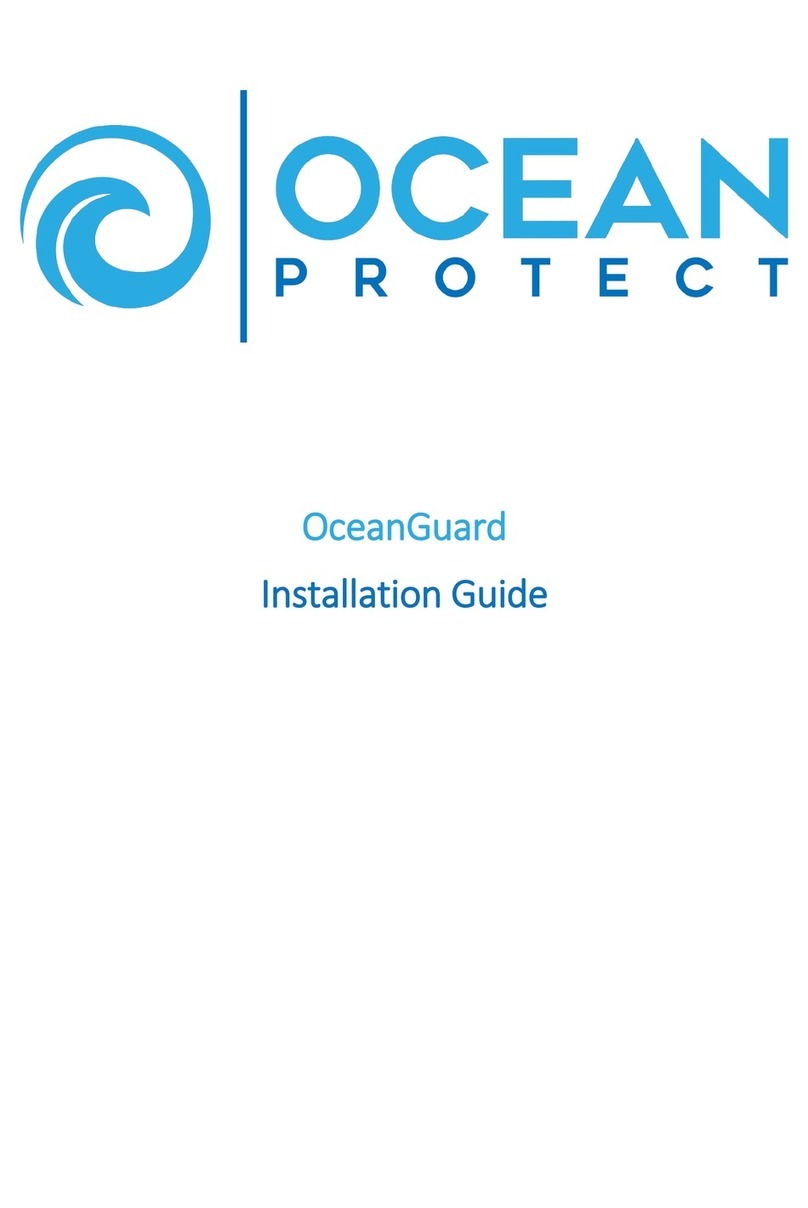
Ocean Protect | Jellyfish Operations & Maintenance Manual
Page 7of 8
Additional Types of Maintenance
Occasionally events on site can make it necessary to perform additional maintenance to ensure the
continuing performance of the device.
Hazardous Material Spill
If there is a spill event on site, the Jellyfish unit should be inspected and serviced accordingly. Specifically, all
captured pollutants and liquids from within the unit should be removed and disposed in accordance with any
additional requirements that may relate to the type of spill event. Additionally, it will be necessary to inspect
the filter cartridges and assess their contamination, depending on the type of spill event it may be necessary
to replace the filtration cartridges.
Blockages
The Jellyfish treatment system is designed to operate in an offline arrangement, where an upstream high
flow bypass structure is in used. In the unlikely event that flooding occurs upstream of the Jellyfish system,
the following steps should be undertaken to assist in diagnosing the issue and determining the appropriate
response.
1. Inspect the upstream diversion structure to ensure that it is free of debris and pollutants
2. Inspect the Jellyfish unit checking both the inlet and outlet pipes for obstructions (e.g. pollutant build-
up, blockage), which if present, should be removed.
Major Storms and Flooding
In addition to the scheduled activities, it is important to inspect the condition of the Jellyfish after a major
storm event. The focus is to inspect for damage and higher than normal sediment accumulation that may
result from localised erosion. Where necessary, damaged components should be replaced and accumulated
pollutants should be removed and disposed.
Disposal of Waste Materials
The accumulated pollutants found in the Jellyfish must be handled and disposed of in a manner that is in
accordance with all applicable waste disposal regulations. When scheduling maintenance, consideration
must be made for the disposal of solid and liquid wastes. If the filter cartridges have been contaminated with
any unusual substance, there may be additional special handling and disposal methods required to comply
with relevant government/authority/industry regulations.
Maintenance Services
With over a decade and a half of maintenance experience Ocean Protect has developed a systematic
approach to inspecting, cleaning and maintaining a wide variety of stormwater treatment devices. Our fully
trained and professional staff are familiar with the characteristics of each type of system, and the processes
required to ensure its optimal performance.
Ocean Protect has several stormwater maintenance service options available to help ensure that your
stormwater device functions properly throughout its design life. In the case of our Jellyfish system we offer
long term pay-as-you-go contracts, pre-paid once off servicing and replacement cartridges.
For more information please visit www.OceanProtect.com.au




























